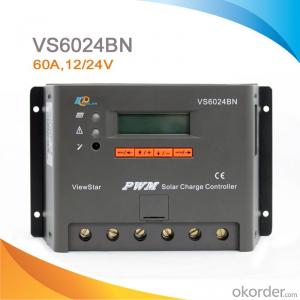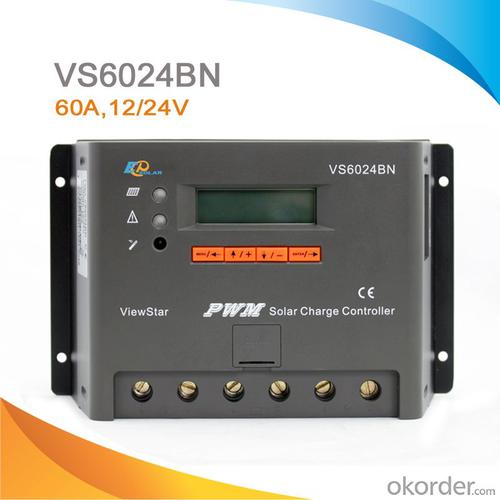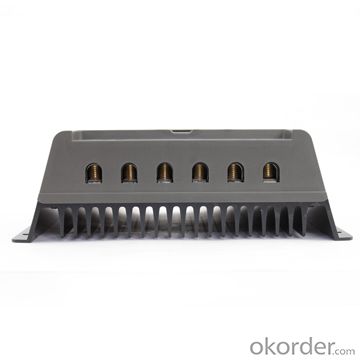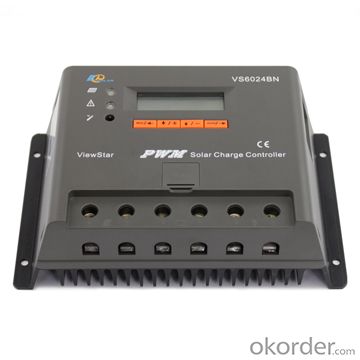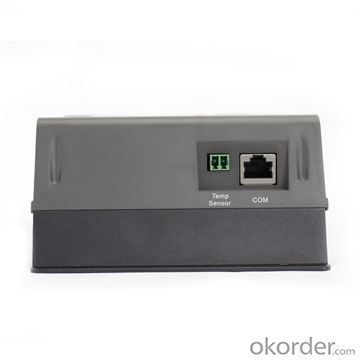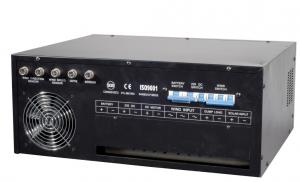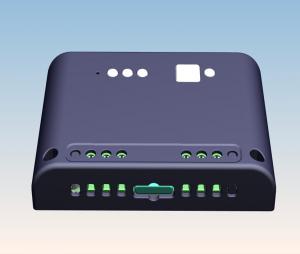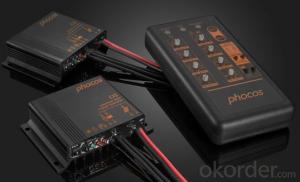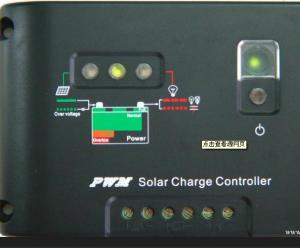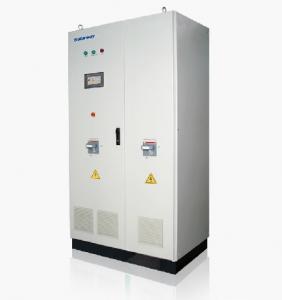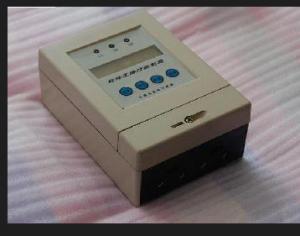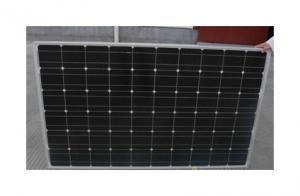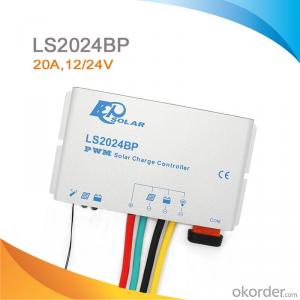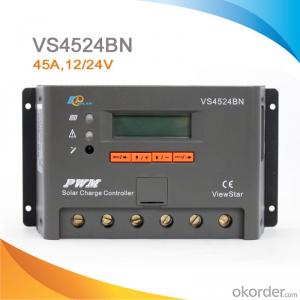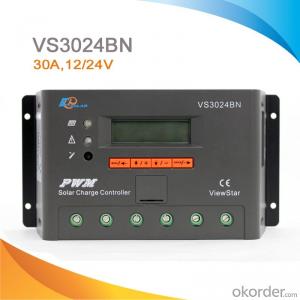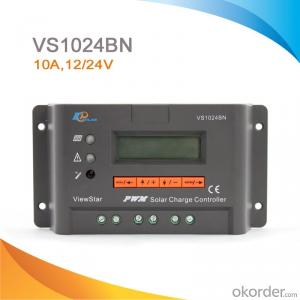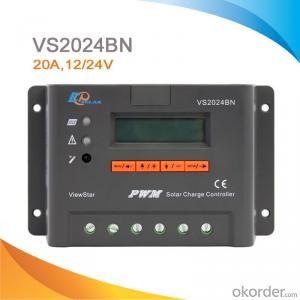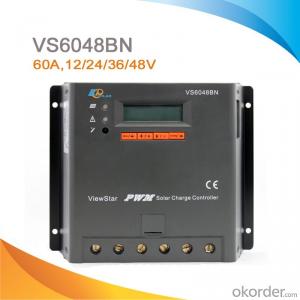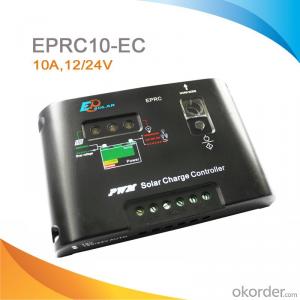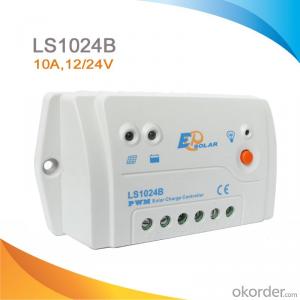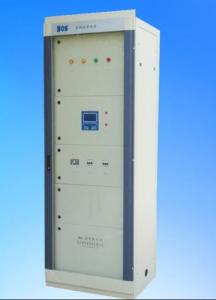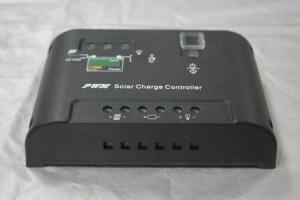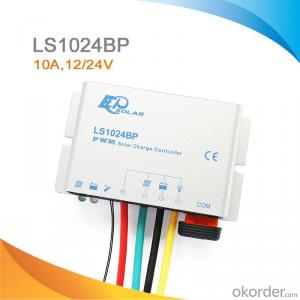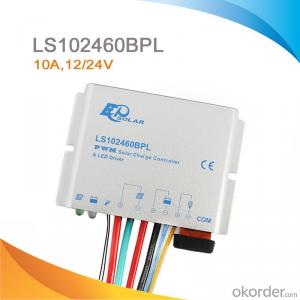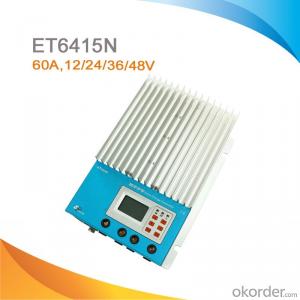Electric Fence Solar Powered Controllers - LCD/LED High Quality PWM Solar Street Light Charge Controller/Regulator with CE ROHS, 60A, 12V/24V, VS6024BN
OKorder Service Pledge
OKorder Financial Service
You Might Also Like
Descriptions:
A solar inverter, or PV inverter, or Solar converter, converts the variable direct current (DC) output of a photovoltaic (PV) solar panel into a utility frequency alternating current (AC) that can be fed into a commercial electrical grid or used by a local, off-grid electrical network. It is a critical BOS–component in a photovoltaic system, allowing the use of ordinary AC-powered equipment. Solar inverters have special functions adapted for use with photovoltaic arrays, including maximum power point tracking and anti-islanding protection.
Features:
·Excellent EMC design
·32 bit MCU with high speed
·High efficient Series PWM charging
·Four battery type options: Sealed, Gel, Flooded, and USER
·Intelligent lighting and timer control for solar lighting system
·12 bit A/D high-precision sampling to ensure accuracy
·Use MOSFET as electronic switch
·Full control parameters setting and modification, diversified load control mode
·Humanized design of browser interface, undertake every operating conveniently
·Temperature compensation
·Adopt graphics dot-matrix LCD screen and HMI (human-machine interface) with 4 buttons,integrated menu displaying and operation
Electronic Protections:
·PV short circuit protection
·PV reverse polarity protection
·Battery overcharge protection
·Battery over discharge protection
·Battery reverse polarity protection
·Load overload protection
·Load short circuit protection
·Overheating protection
Specification:
Model | VS1024BN | VS2024BN | VS3024BN | VS4524BN | VS6024BN |
Nominal system voltage | 12V/24V auto work | ||||
Rated battery current | 10A | 20A | 30A | 45A | 60A |
Rated load current | 10A | 20A | 30A | 45A | 60A |
Max. battery voltage | 32V | ||||
Equalize charging voltage | Sealed: 14.6V, Flooded: 14.8V, User-defined: 9~17V | ||||
Boost charging voltage | Gel: 14.2V, Sealed: 14.6V, Flooded: 14.8V, User-defined: 9~17V | ||||
Float charging voltage | Gel /Sealed /Flooded: 13.8V, User-defined: 9~17V | ||||
Low voltage reconnect voltage | Gel /Sealed /Flooded: 12.6V, User-defined: 9~17V | ||||
Low voltage disconnect voltage | Gel /Sealed /Flooded: 11.1V, User-defined: 9~17V | ||||
Self-consumption | ≤15mA(12V); ≤10mA(24V); ≤9mA(36V); ≤8mA(48V) | ||||
Grounding | Common negative | ||||
Temp. compensation | -3mV/°C/2V | ||||
Relative humidity | 10%~90% Non-condensation | ||||
Communication | RS485 / RJ45 interface | ||||
LCD temperature | -20°C ~ +70°C | ||||
Working temperature | -25°C ~ +55°C | ||||
Humidity | ≤95% N.C. | ||||
Enclosure | IP30 | ||||
Overall dimension | 162x85x40mm | 162x100x50mm | 200x103x58mm | 201x109x59mm | 205x129x67mm |
Terminals | 4mm2 | 10mm2 | 16mm2 | 35mm2 | 35mm2 |
Net weight | 0.2kg | 0.4kg | 0.7kg | 0.9kg | 1.3kg |
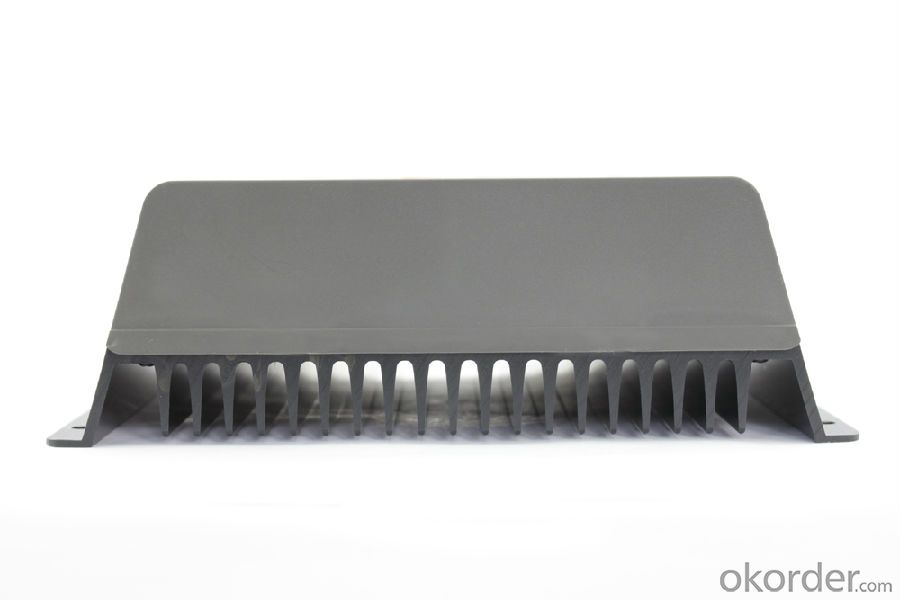
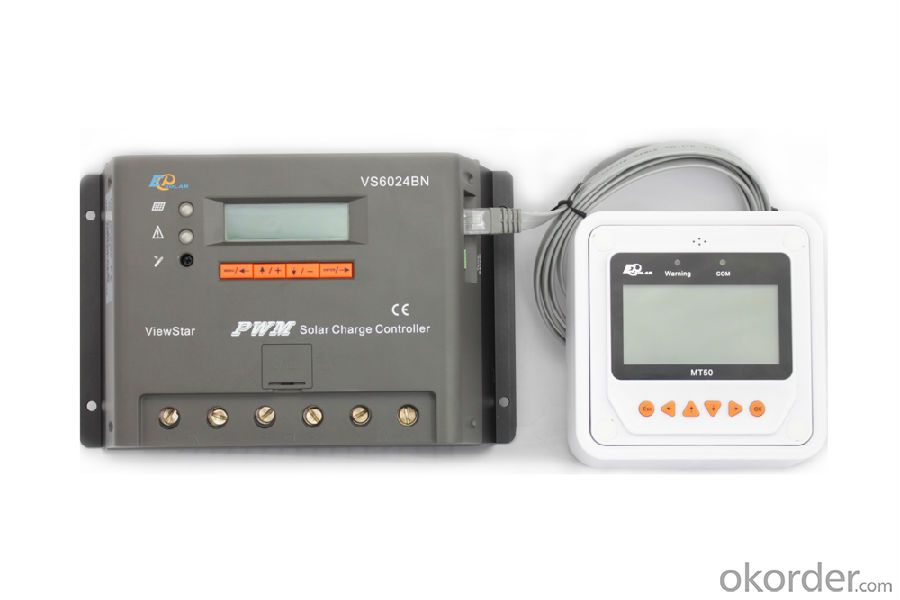
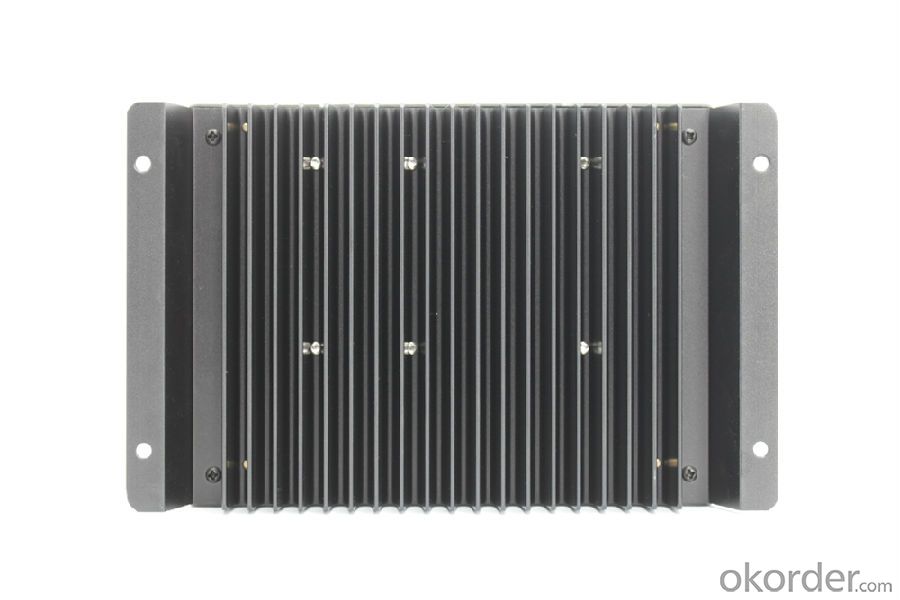
- Q: How often should a solar controller be replaced?
- The solar controller, also known as the charge controller, plays a crucial role in regulating the voltage and current between the solar panels and batteries in a solar power system. Its lifespan can vary depending on factors like quality, usage, and environmental conditions. Typically, a well-maintained and high-quality solar controller can last anywhere from 10 to 15 years or even longer. However, it is essential to regularly monitor its performance to ensure optimal functioning. Several factors need consideration when determining whether to replace a solar controller: 1. Age: If your solar controller is approaching or has exceeded the typical lifespan of 10-15 years, it may be wise to consider replacement. 2. Performance: If you observe a significant decline in the efficiency or effectiveness of your solar power system, it might indicate that the solar controller is not performing as it should. Issues like erratic charging, overcharging, or voltage regulation failure would warrant a replacement. 3. Technological advancements: Solar controller technology continually advances and improves. If significant advancements have occurred since your current controller was installed, upgrading to a newer model could provide better efficiency, enhanced features, and improved performance. 4. Maintenance and environmental factors: Regular maintenance and proper care can prolong the lifespan of a solar controller. However, if the controller has been exposed to harsh environmental conditions like extreme temperatures, high humidity, or excessive moisture, it may degrade faster and require earlier replacement. Before deciding to replace your solar controller, it is crucial to consult a professional solar installer or technician. They can assess your specific solar power system circumstances and offer expert advice on whether a replacement is necessary.
- Q: How does a solar controller handle the protection against short circuits?
- A solar controller handles protection against short circuits by monitoring the current flow from the solar panels. If a short circuit occurs, the controller will detect the sudden increase in current and immediately shut off the circuit to prevent any damage to the panels or other connected devices. This is done through the use of built-in circuitry or fuses that can quickly interrupt the flow of electricity in case of a short circuit.
- Q: What is the role of a solar controller in preventing battery memory effect?
- The role of a solar controller in preventing battery memory effect is to regulate the charging process of the battery connected to a solar panel system. Battery memory effect, also known as voltage depression, occurs when a battery is repeatedly charged and discharged at the same voltage levels, resulting in reduced overall capacity. A solar controller helps prevent this memory effect by monitoring and controlling the charging process of the battery. It regulates the voltage and current supplied to the battery, ensuring that it is charged to its full capacity without overcharging. One way a solar controller accomplishes this is by implementing a three-stage charging process: bulk, absorption, and float. During the bulk stage, the controller supplies a high current to rapidly charge the battery until it reaches a specific voltage level. In the absorption stage, the voltage is held steady while the current is gradually reduced, allowing the battery to reach its maximum capacity. Finally, in the float stage, the voltage is lowered to a maintenance level, keeping the battery fully charged without overcharging. By carefully controlling the charging process, a solar controller helps prevent the battery memory effect by avoiding prolonged exposure to the same voltage levels. This ensures that the battery's full capacity is utilized and its lifespan is extended. Additionally, some advanced solar controllers may also incorporate features like temperature compensation, equalization charging, and low voltage disconnect to further protect the battery and optimize its performance. Overall, the role of a solar controller in preventing battery memory effect is to regulate the charging process, ensuring that the battery is charged and maintained at optimal levels, ultimately extending its lifespan and maximizing its capacity.
- Q: Can a solar controller be used with a solar-powered GPS tracker?
- Yes, a solar controller can be used with a solar-powered GPS tracker. A solar controller regulates the flow of electricity from the solar panels to the battery, ensuring efficient charging and preventing overcharging. This is crucial for maintaining the power supply to the GPS tracker, especially in situations where there may be variations in sunlight intensity.
- Q: Can a solar controller handle different battery types (e.g., lead-acid, lithium)?
- Yes, a solar controller can handle different battery types such as lead-acid and lithium. However, it is important to note that not all solar controllers are designed to support all battery types. Different battery chemistries require specific charging algorithms and voltage settings. Therefore, it is crucial to choose a solar controller that is compatible with the specific battery type you intend to use.
- Q: What is the display type of a solar controller?
- The display type of a solar controller is typically an LCD (Liquid Crystal Display) screen.
- Q: How does a solar controller handle the protection against overheating?
- A solar controller handles protection against overheating by monitoring the temperature of the solar panels and regulating the charging process accordingly. It uses temperature sensors to continuously measure the panel temperature and adjusts the charging voltage and current to prevent overheating. This helps maintain the optimal operating temperature of the panels and ensures their long-term efficiency and lifespan.
- Q: What is the typical warranty period for a solar controller?
- The typical warranty period for a solar controller ranges from 1 to 5 years, depending on the manufacturer and the specific model.
- Q: Can a solar controller be used with a solar-powered university or college?
- Yes, a solar controller can be used with a solar-powered university or college. A solar controller is an essential component of a solar power system as it regulates the flow of electricity from the solar panels to the batteries. This ensures that the batteries are charged efficiently and protected from overcharging or damage. In a solar-powered university or college, a solar controller would be necessary to optimize the performance of the solar panels and store excess energy for later use, contributing to the institution's sustainable energy goals.
- Q: How does a solar controller handle variations in solar panel temperature?
- A solar controller handles variations in solar panel temperature by implementing temperature compensation algorithms. These algorithms adjust the charging parameters, such as voltage and current, to optimize the charging efficiency and prevent overcharging or undercharging of the batteries connected to the solar panel system. By continuously monitoring the panel temperature, the controller ensures that the charging process is adjusted accordingly, allowing for efficient and safe operation of the solar panel system.
Send your message to us
Electric Fence Solar Powered Controllers - LCD/LED High Quality PWM Solar Street Light Charge Controller/Regulator with CE ROHS, 60A, 12V/24V, VS6024BN
OKorder Service Pledge
OKorder Financial Service
Similar products
Hot products
Hot Searches
Related keywords
